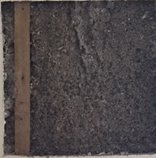We have a roof leak, which is being repaired. Part of one wall was damaged from water and mold, and a section about 2' x 2' was cut out. Photo below.
Once the roof is repaired, does this hold need to be repaired immediately (new drywall and paint), or can it be left open like this for an extended period (months). Reason being we will be away from home and the timing of the repair is very close to our departure date.
.
.
Once the roof is repaired, does this hold need to be repaired immediately (new drywall and paint), or can it be left open like this for an extended period (months). Reason being we will be away from home and the timing of the repair is very close to our departure date.
.
.

